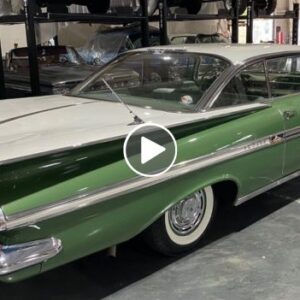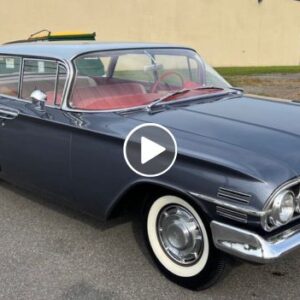In the annals of American truck history, the 1969 GMC truck stands as a symbol of durability, toughness, and classic style. As part of the long-standing legacy of General Motors trucks, the 1969 GMC models made their mark on both the pickup and the commercial truck market. A hallmark of the late 1960s automotive landscape, this particular year of GMC truck remains a beloved classic among truck enthusiasts and collectors alike.
1. The 1969 GMC Lineup
The 1969 GMC truck lineup included a variety of models designed to cater to different needs. The assortment of models ranged from half-ton pickups (such as the C1500 and K1500) to heavier-duty commercial trucks (including the C3500). GMC produced trucks in various body styles, including stepside, fleetside, and panel trucks, providing versatility and options for various uses.
The two main designations for the 1969 GMC trucks were the “C” and “K” series. The C series trucks were two-wheel drive, while the K series offered four-wheel drive options. Furthermore, the numerical suffix denoted the weight capacity of the truck, with the 1500, 2500, and 3500 designations representing half-ton, three-quarter-ton, and one-ton weight capacities, respectively.
2. Design and Styling
The late 1960s marked a shift in design for GMC trucks, as the company started moving away from the rounded, curvaceous body styles of the 1950s. The 1969 GMC truck featured more angular lines and squared-off corners, giving it a more aggressive, modern appearance. The bold, distinctive grille design was a standout feature, with its prominent horizontal bars and unique, recessed quad headlamps. The cab and front fenders were designed with a cohesive, streamlined look, while the bed options included both stepside and fleetside styles.
The interior of the 1969 GMC truck was designed with simplicity and functionality in mind. The dashboard layout was straightforward, with easy-to-read gauges and accessible controls. While creature comforts were minimal by today’s standards, these trucks offered an honest, no-nonsense driving experience that suited the needs of the time. Bench seats were standard, with options for vinyl or cloth upholstery, and the large, thin-rimmed steering wheel provided a feeling of connection to the road.
3. Powertrains and Performance
Under the hood, the 1969 GMC truck offered a range of engines to suit various needs and preferences. The base engine was a 250 cubic inch (4.1-liter) inline-six, which produced approximately 155 horsepower and 235 lb-ft of torque. This reliable, workhorse engine provided ample power for most everyday tasks.
For those who needed more muscle, GMC offered a selection of V8 engines, including a 307 cubic inch (5.0-liter) V8 with 200 horsepower and 300 lb-ft of torque, a 350 cubic inch (5.7-liter) V8 with 250 horsepower and 355 lb-ft of torque, and the big-block 396 cubic inch (6.5-liter) V8 with 310 horsepower and 410 lb-ft of torque. These engines provided the added power and torque needed for more demanding tasks, such as towing or hauling heavy loads.
Transmissions available for the 1969 GMC truck included a three-speed manual, a four-speed manual, and an optional Turbo-Hydramatic 350 three-speed automatic. The four-wheel-drive K series trucks utilized a transfer case to distribute power to the front and rear axles, providing added traction and control in challenging terrain or inclement weather.
4. Suspension and Brakes
The 1969 GMC truck featured a rugged, proven suspension system designed for durability and off-road capability. The front suspension utilized an independent design with coil springs and wishbones, while the rear suspension featured leaf springs and a solid axle. This setup provided a compliant ride and predictable handling, making the trucks well-suited for a variety of tasks, from daily driving to off-road adventures.
Braking performance was provided by drum brakes on all four corners, which were typical for trucks of the era. Power brakes were optional, as well as front disc brakes for improved stopping power and fade resistance. Steering was generally manual, with power steering available as an option for those who desired added convenience and ease of maneuverability.
5. Legacy and Influence
The 1969 GMC truck played a pivotal role in the evolution of the American pickup and commercial truck market. Its combination of ruggedness, reliability, and style helped solidify the brand’s reputation for building tough, dependable vehicles. The influence of the 1969 GMC truck can be seen in the design and engineering of subsequent GMC models, as well as in the broader pickup market as a whole.
Today, the 1969 GMC truck holds a special place in the hearts of classic truck enthusiasts and collectors. Its distinctive styling, robust powertrains, and no-nonsenseinterior make it a sought-after piece of automotive history. Restored and original examples can be found at car shows, classic car auctions, and on the roads, where they continue to be admired for their timeless appeal.
Moreover, the ruggedness and simplicity of the 1969 GMC truck have made it an ideal platform for customization and modification. Hot rodders, off-road enthusiasts, and restomod builders have embraced these trucks as a canvas for their creative visions, transforming them into unique expressions of personal style and automotive ingenuity.
In the realm of popular culture, the 1969 GMC truck has also made its mark. It has appeared in numerous movies, television shows, and even music videos, often serving as a symbol of Americana and the hardworking spirit that has defined the United States for generations.
The 1969 GMC truck stands as a testament to the innovation and craftsmanship that characterized the American automotive industry in the late 1960s. Its combination of rugged durability, versatile performance, and eye-catching style have made it an enduring classic that continues to captivate truck enthusiasts and collectors alike.
From its humble beginnings as a workhorse for farms, construction sites, and small businesses, to its current status as a cherished piece of automotive history, the 1969 GMC truck has left an indelible mark on the landscape of American trucks. Its legacy continues to inspire future generations of pickup and commercial truck designs, as well as serving as a reminder of the ingenuity and determination that has long defined the American automotive industry.
As we look back on the 1969 GMC truck, we can appreciate not only its contributions to the evolution of the pickup and commercial truck market but also its role as a symbol of American perseverance and innovation. Whether restored to its original glory or customized to suit the tastes of a modern enthusiast, the 1969 GMC truck remains a beloved and iconic piece of automotive history that will continue to endure for years to come.





